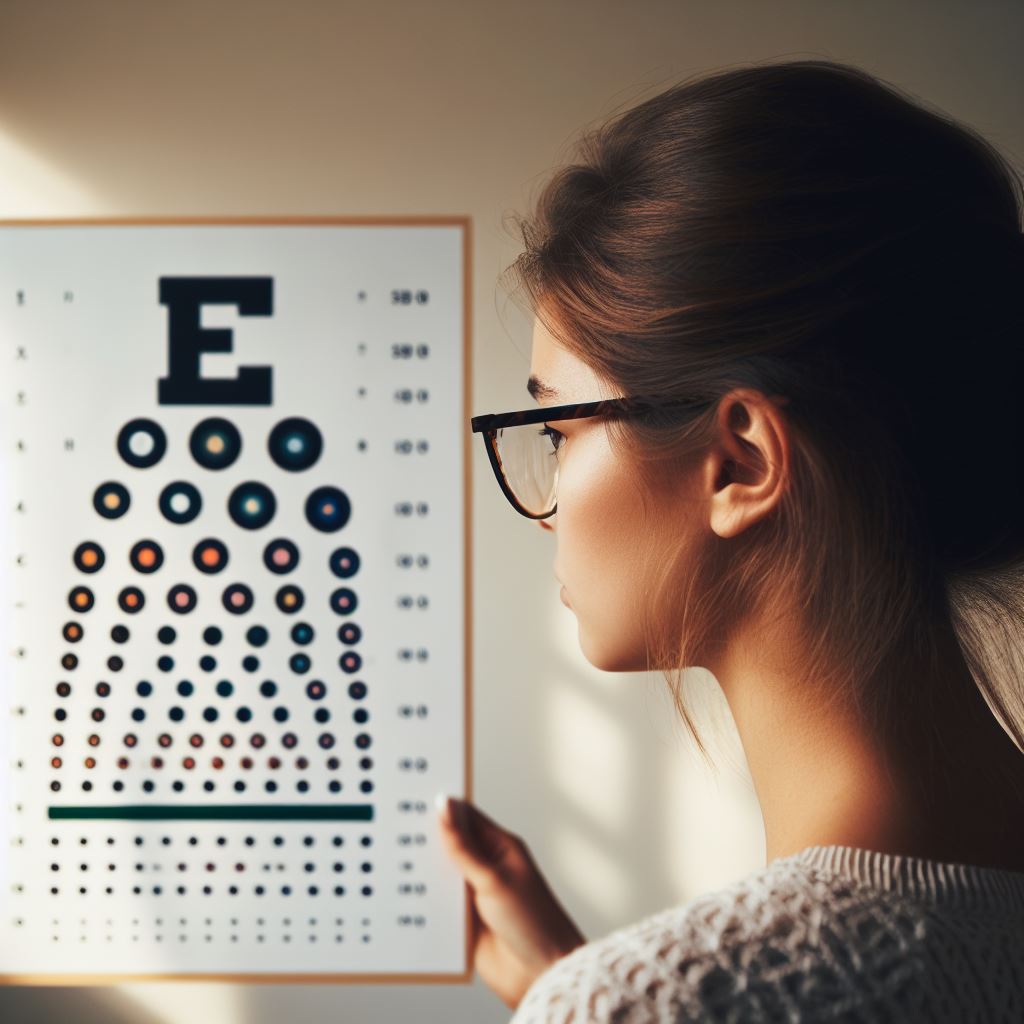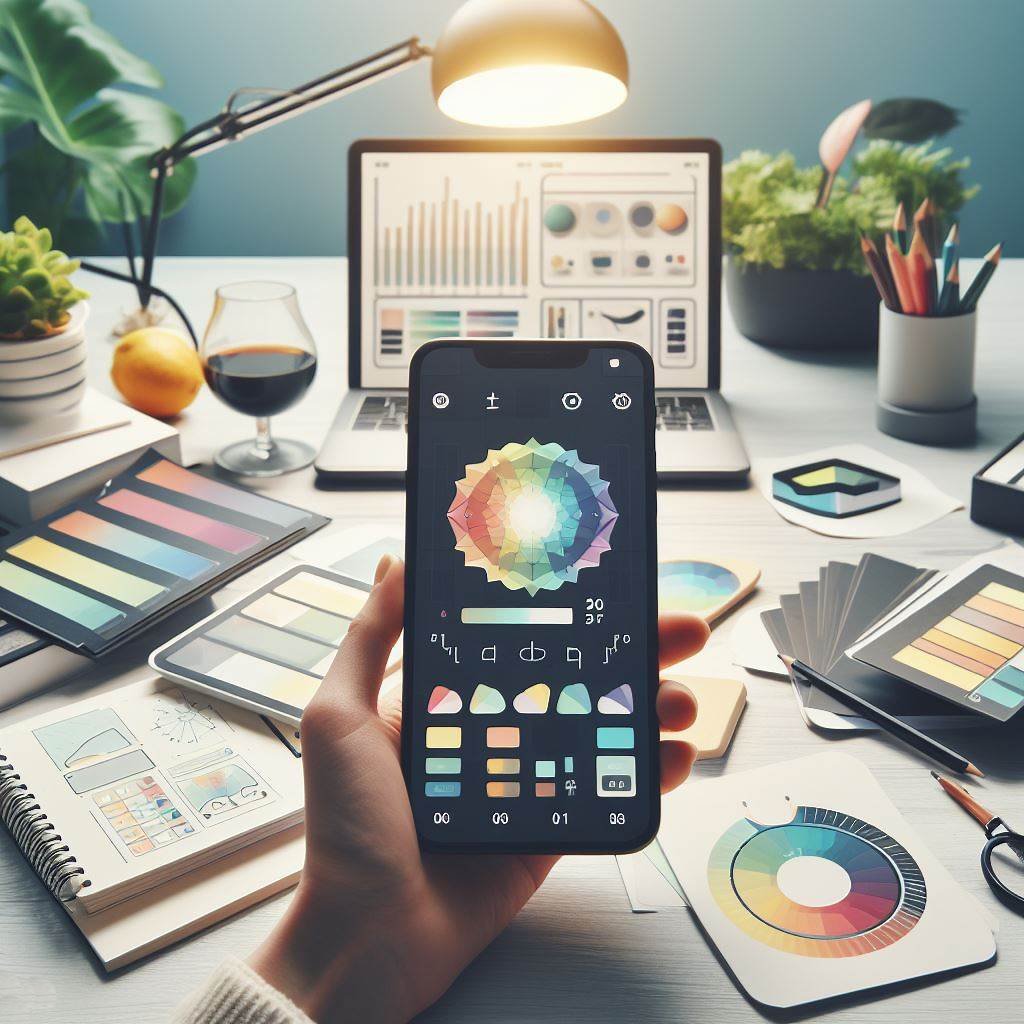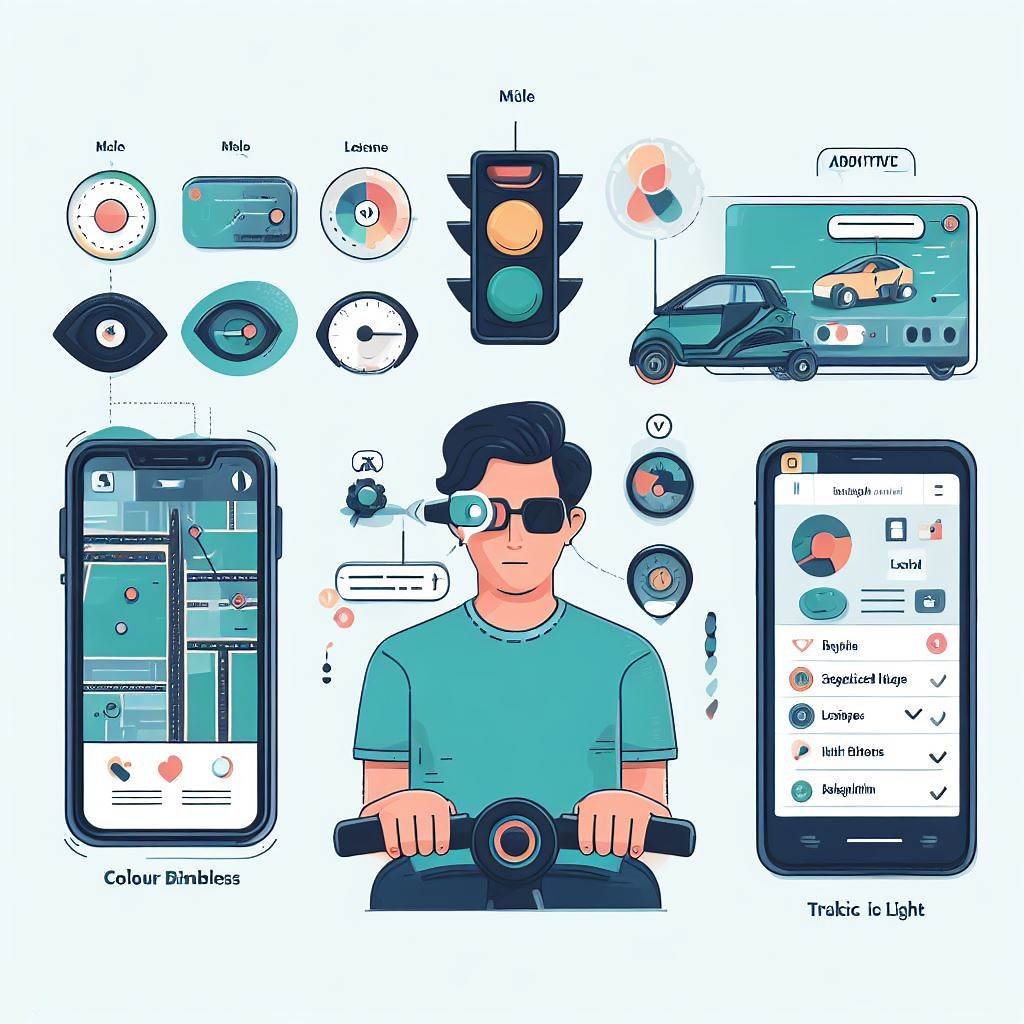
Those with minor color vision deficiency, also called anomalous trichromacy, have a mild form of color blindness causing occasional difficulty differentiating certain shades and hues. Their color perception differs somewhat from average. This can lead to subtle mix-ups reading colored charts or signals, matching clothes, and identifying wires.
But with practical adaptations, compassionate support, and embracing their unique vision as an insightful perspective rather than deficiency, those touched by minor color confusion can confidently navigate life’s colorful obstacles and thrive. Here we will explore tips and strategies for making the most of color perception abilities while smoothingly over any deficiencies. When leveraged properly, minor color blindness need not be debilitating.
The first step is to diagnose your specific color vision profile through basic testing. This allows you to pinpoint the nuances of your color perception strengths and weaknesses.

Get Professionally Tested
Consult an optometrist or general practitioner for a standard color vision exam to determine your particular type and degree of color anomaly, like deuteranomaly or protanomaly. Don’t just assume your situation. Seek clarity through assessment.
Learn Your Color Perception Profile
Once diagnosed, research to deeply understand your color vision profile. For example, know precisely which shades of red, green or purple are problematic versus discernible. This allows carefully targeting coping strategies.
Track Problem Situations
Make notes of real life situations where your color issues causes uncertainties or errors. But also track settings in which you function normally without impediment. This pinpoints where adaptations help versus overaccommodating.
Connect with Others Touched by Color Confusion
Knowing others grapple with similar mild challenges provides reassurance. Local color blind meetups and online groups for your specific condition exist to share advice, frustrations and resources. You gain insight into practical coping strategies.
Making some minor environmental tweaks and using assistive tech discreetly when beneficial helps smooth out sporadic home life color confusion for those with mild deficiencies.

Use Color Verifying Aids Occasionally
When uncertain about clothing colors or other home items, leverage tools like color decoder apps and readers. Scanning then hearing shades aids identification and prevents mix-ups.
Recruit Household Help
Politely ask willing housemates to provide quick second opinions on indistinguishable colors when coordinating outfits, choosing paints etc. Most family members don’t mind occasional discreet assist when made aware it’s needed sometimes.
Focus on Texture and Contrast
Practice relying more on texture, sheen, contrast and patterns for identification when colors seem unclear. Over time, reduce overdependence on color alone. Play to your perceptual strengths.
Optimize Lighting Conditions
Ensure ample, high quality lighting throughout living spaces to maximize your color and detail perception capabilities. Proper conditions greatly impact your ability to discern challenging hues.
Most academic and professional settings rely heavily on color-coded systems, graphics and materials that can pose minor hurdles. But accommodations and discreet use of assistive technologies help minimize unnecessary obstacles to achievement.

Request Alternate Color Formats
Ask teachers, managers and disability/accessibility resources to provide supplementary versions of diagrams, graphics and illustrated concepts using icons, patterns, shapes etc. Most gladly accommodate needs when directly informed.
Explain Your Needs and Seek Collaborative Help
Discreetly inform classmates, coworkers, supervisors of your mild colorblindness and how they can unobtrusively assist at times reading charts, identifying equipment etc. Most colleagues are happy to collaborate when made aware.
Use Color Identifying Technology
Portable color readers and apps enable independently scanning and verifying the colors of wiring, computer elements, concept illustrations and more by providing audio color readings. Extremely useful tools for school or professional settings.
Customize Your Workspaces
Adjust lighting, glare, computer screen colors, furniture arrangements and workspace patterns to optimize conditions for your particular color perception needs. Minor environmental tweaks aid in distinguishing challenging hues when possible.
Navigating colored transit maps, traffic lights and transportation signage poses some minor added obstacles for those with color vision abnormalities. But strategies empower safe independent travel.

Use Caution with Colored Signals
Take a little extra time assessing traffic colors by cross referencing position and brightness. Enable colorblind modes on GPS apps and phones to provide audio color alerts when possible. Apps can also scan streetlights and identify colors if uncertain.
Have Maps Double Checked When Possible
Request a companion quickly verify map colors before traveling in unfamiliar areas when feasible. It only takes a moment to prevent frustrating mix-ups differentiating similar hues of red, green, or blue transit lines.
Leverage Colorblind Travel Apps
Navigation apps like Colorblind Pal allow entering start and end points, then provide audio guidance noting landmarks, bus colors, and signs using language accommodating to color vision deficiency. Helpful when traveling solo.
Try Specialized Lenses
Some chromatic lenses may slightly boost problematic red and green shades to improve color perception for those with mild color confusion. While not a cure, for many these aids assist just enough with traffic and signage colors when driving.
In addition to practical adaptations, connecting with others who have mild color blindness and trying specialized tools provides insight and support for smooth navigation of color uncertainties.

Connect with Others Touched by Mild Color Confusion
Knowing others who share your experience provides reassurance and valuable advice. Local color blind meetups and online groups for your specific condition exist to share stories, strategies, frustrations and recommendations.
Try Specialized Lenses and Smartphone Apps
Specialized glasses and contacts with filters customized for your condition may help boost problematic hues. Apps like Colorfy enable discreetly scanning and verifying uncertain colors. Testing tools can determine what helps versus hype.
Join Online Support Groups
Forums like Color Blind Pal connect you with others experiencing subtle color vision deficiencies to share tips, product reviews, experiences navigating academia and careers, and more. Shared experiences provide perspective.
Learn Your Rights and Available Resources
Research to understand your legal rights to accessibility accommodations in school and the workplace. Knowing what resources must be provided empowers you to advocate for implementation based on your specific needs.
Raising awareness of colorblindness needs from your insider perspective encourages more conscious color use in products, curriculums, signage and interfaces. Your voice and feedback influence positive change.

Provide User Experience Feedback
Respectfully recommend organizations, companies and institutions implement more universally accessible practices in informational materials, environments, policies etc based on your real world experiences and needs. Your tips greatly aid adoption.
Advocate for Colorblind Perspectives
Support initiatives lobbying for laws requiring minimum colorblind accommodation standards for traffic systems, public signage, electronics, education materials and design. Grassroots and legislative efforts raise awareness and spark progress.
Promote Accessible Design Education
Advocate for mandatory instruction on accessible color use and colorblind-friendly data visualization in graphic design, urban planning and architecture academic programs. Early exposure sparks lifelong practice.
Share Your Narrative Publicly
By openly sharing your personal stories about living with mild colorblindness on social media, within your circles, and in the public eye, you foster understanding and mainstream acceptance. Increased visibility facilitates change.
While practical adaptations aid functioning, cultivating self-compassion, focusing on capabilities, and refusing to limit passions also empowers those mildly color deficient to thrive and self-actualize.

Practice Self-Compassion
When you occasionally slip-up distinguishing similar colors, respond kindly and patiently to yourself. Don’t let perfectionism breed shame. Progress comes incrementally with encouragement, not self-judgment.
Focus on Your Perceptual Positives
While certain hues challenge you, remember your vision likely excels at perceiving ultra-nuanced details, textures, gradients and patterns the average person readily overlooks. These talents are true gifts to cultivate.
Don't Let Challenges Limit You
Don’t allow occasional color mix-ups to inhibit you from boldly pursuing interests, hobbies and activities you love. Adapt as needed using available tools and help, but live passionately. With the right outlook, mild color issues don't have to narrow your world.
Surround Yourself with Understanding
Seek out friends, partners, colleagues and communities who compassionately understand your needs. Those who provide occasional discreet help and patience empower you to confidently be yourself. You deserve support.
While minor color vision deficiencies may cause occasional mix-ups, with practical adaptations, compassionate support, and positive self-view those affected can minimize confusion and live fully.
Targeted accommodations, discreet use of assistive tech, and gaining sighted assistance when beneficial fosters achievement and access. But constructive self-perception empowers as well. Reframing your unique color perception as a valuable manifestation of natural human diversity allows you to recognize capabilities, strengths and talents not dependent on average color discernment. With the right outlook, mild color variance need not inhibit your purpose and passions. The future is vibrant for those who see its colors differently.